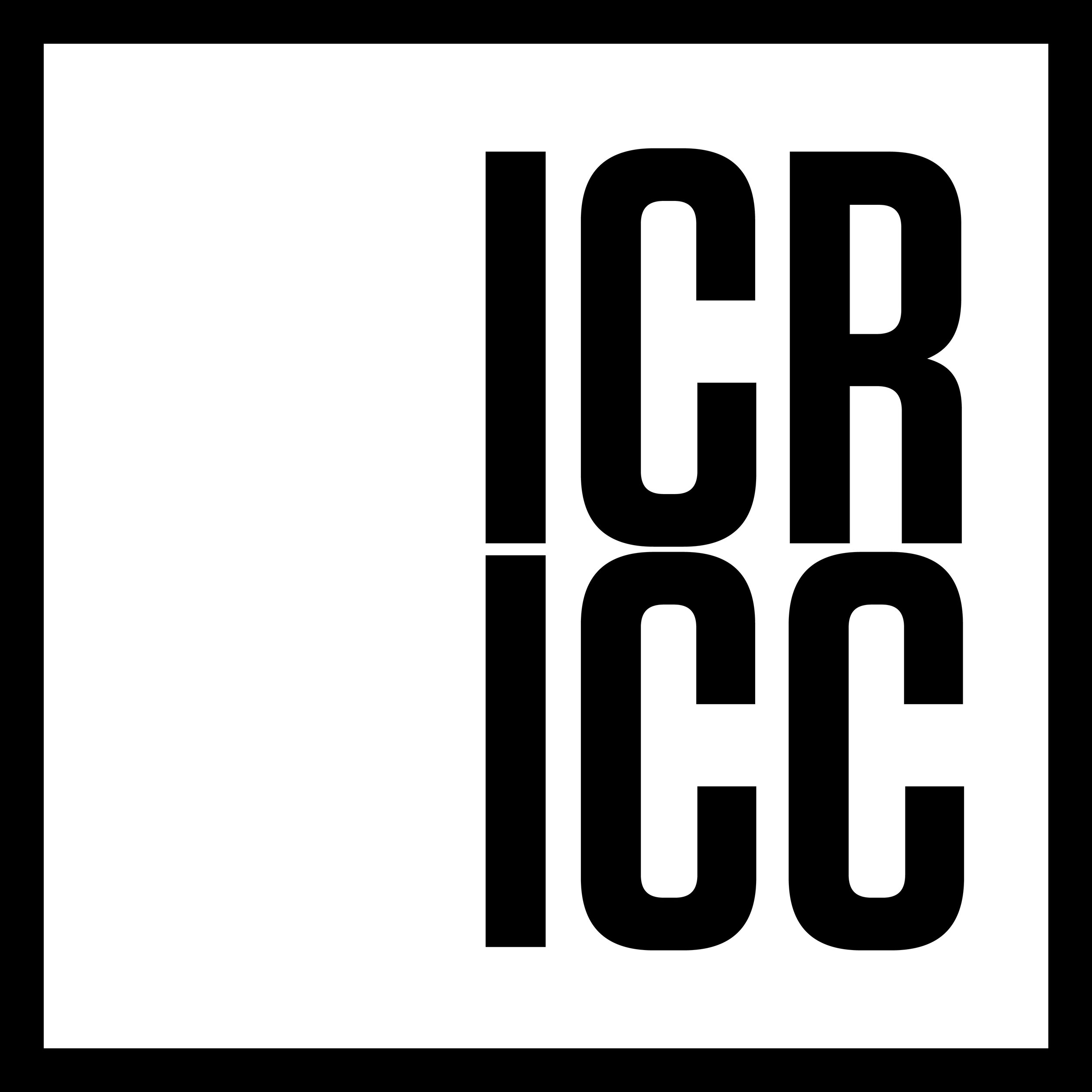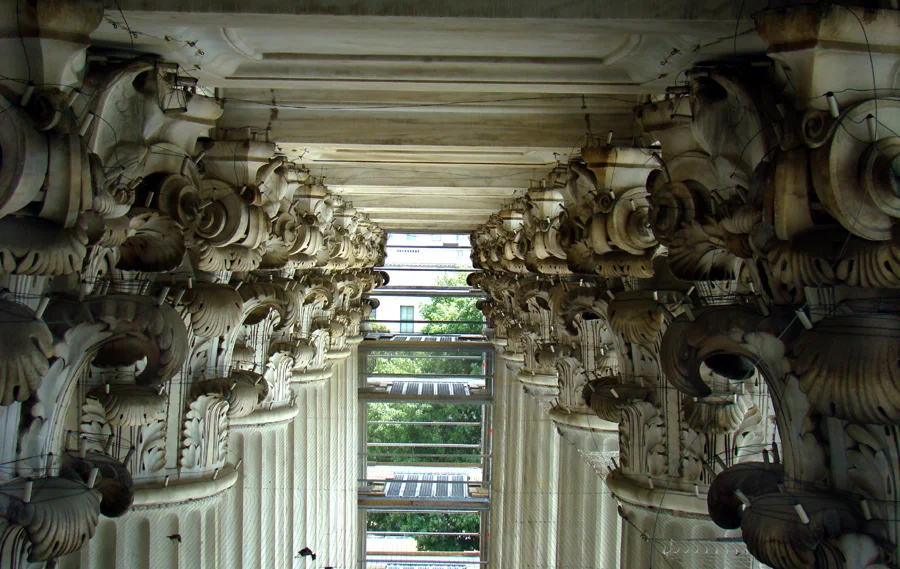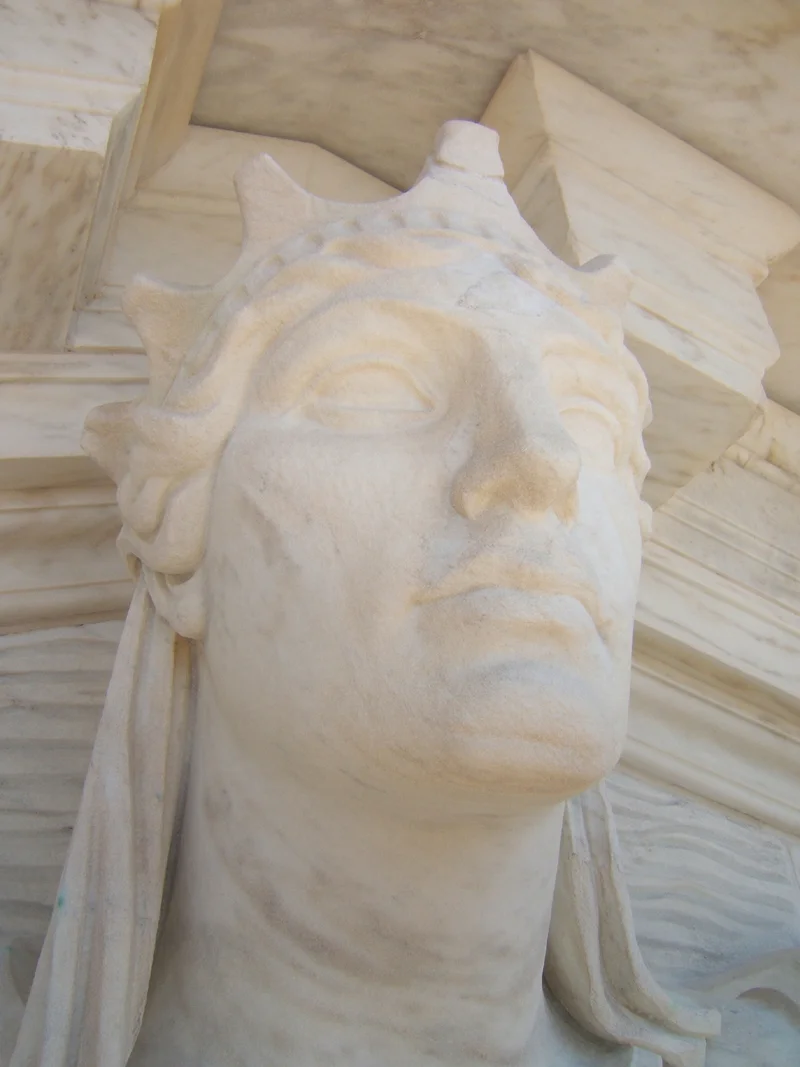Marble Consolidation Testing
U.S. Supreme Court
The Supreme Court Building was designed by architect Cass Gilbert (as Gilbert's last major project; he died before it was completed). It rises four stories above ground. The cornerstone was laid on October 13, 1932, and construction completed in 1935, "The building was designed on a scale in keeping with the importance and dignity of the Court and the Judiciary as a coequal, independent branch of the United States Government, and as a symbol of 'the national ideal of justice in the highest sphere of activity." The Supreme Court Building is built in the Neoclassical style. The public façade is made of marble quarried from Vermont, and that of the non-public-facing courtyards, Georgia marble. Most of the interior spaces are lined with Alabama marble, except for the Courtroom itself, which is lined with Spanish ivory vein marble. For the Courtroom's 24 columns, "Gilbert felt that only the ivory buff and golden marble from the Montarrenti quarries near Siena, Italy" would suffice. To this end, in May 1933, he petitioned the Italian Premier, Benito Mussolini, "to ask his assistance in guaranteeing that the Siena quarries sent nothing inferior to the official sample marble."
Location
Washington, D.C.
Architect & Date
Cass Gilbert, 1932
Client
Oehrlein & Associates Architects
Services Provided
In situ consolidation testing on west pediment marble sculptures and laboratory testing on marble samples from column capitals was conducted due to severe erosion.
Laboratory and in situ consolidation testing on marble:
In situ consolidation testing on west pediment marble sculptures
Laboratory testing on marble samples from column capitals
ICR researched potential consolidation treatments to stabilize the weakened marble surfaces, increase soundness and improve resistance to acid rain, without sacrificing the original color, texture, or sheen of the original material. The testing program involved conducting an in situ testing program of the potential consolidation treatments on the pediment sculptures and assessing the consolidation by water absorption with RILEM tubes and adhesion tape tests. Laboratory tests included consolidation treatment followed by water drop absorption tests and point loading tests for strength evaluation.






